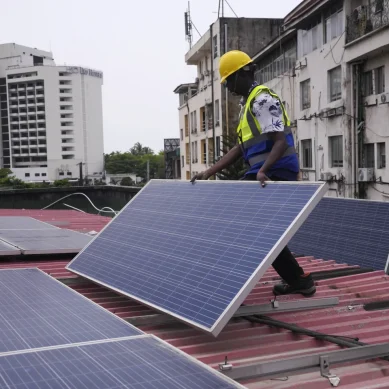
On March 13 this year, the Biden administration unveiled its $842 billion military budget request for 2024, the largest ask (in today’s dollars) since the peaks of the Afghan and Iraq wars. And mind you, that’s before the hawks in Congress get their hands on it.
Last year, they added $35 billion to the administration’s request and, this year, their add-on is likely to prove at least that big. Given that American forces aren’t even officially at war right now (if you don’t count those engaged in counter-terror operations in Africa and elsewhere), what explains so much military spending?
The answer offered by senior Pentagon officials and echoed in mainstream Washington media coverage is that this country faces a growing risk of war with Russia or China (or both of them at once) and that the lesson of the ongoing conflict in Ukraine is the need to stockpile vast numbers of bombs, missiles, and other munitions.
“Pentagon, Juggling Russia, China, Seeks Billions for Long-Range Weapons” was a typical headline in The Washington Post about that 2024 budget request. Military leaders are overwhelmingly focused on a potential future conflict with either or both of those powers and are convinced that a lot more money should be spent now to prepare for such an outcome, which means buying extra tanks, ships, and planes, along with all the bombs, shells, and missiles they carry.
Even a quick look at the briefing materials for that future budget confirms such an assessment. Many of the billions of dollars being tacked onto it are intended to procure exactly the items you would expect to use in a war with those powers in the late 2020s or 2030s.
Aside from personnel costs and operating expenses, the largest share of the proposed budget – $170 billion or 20 per cent – is allocated for purchasing just such hardware.
But while preparations for such wars in the near future drive a significant part of that increase, a surprising share of it – $145 billion, or 17 per cent – is aimed at possible conflicts in the 2040s and 2050s.
Believing that our “strategic competition” with China is likely to persist for decades to come and that a conflict with that country could erupt at any moment along that future trajectory, the Pentagon is requesting its largest allocation ever for what’s called “research, development, test and evaluation” (RDT&E), or the process of converting the latest scientific discoveries into weapons of war.
To put this in perspective, that $145 billion is more than any other country except what China spends on defence in toto and constitutes approximately half of China’s full military budget. So what’s that staggering sum of money, itself only a modest part of this country’s military budget, intended for?
Some of it, especially the “T&E” part, is designed for futuristic upgrades of existing weapons systems. For example, the B-52 bomber – at 70, the oldest model still flying – is being retrofitted to carry experimental AGM-183A Air-Launched Rapid Response Weapons (ARRWs) or advanced hypersonic missiles. But much of that sum, especially the “R&D” part, is aimed at developing weapons that may not see battlefield use until decades in the future, if ever.
Spending on such systems is still only in the millions or low billions, but it will certainly balloon into the tens or hundreds of billions of dollars in the years to come, ensuring that future Pentagon budgets soar into the trillions.
Driving the Pentagon’s increased focus on future weapons development is the assumption that China and Russia will remain major adversaries for decades to come and that future wars with those, or other major powers, could largely be decided by the mastery of artificial intelligence (AI) along with other emerging technologies.
Those would include robotics, hypersonics (projectiles that fly at more than five times the speed of sound), and quantum computing. As the Pentagon’s 2024 budget request put it:
“An increasing array of fast-evolving technologies and innovative applications of existing technology complicates the [Defence] Department’s ability to maintain an edge in combat credibility and deterrence. Newer capabilities such as counterspace weapons, hypersonic weapons, new and emerging payload and delivery systems… all create a heightened potential… for shifts in perceived deterrence of US military power.”
To ensure that this country can overpower Chinese and/or Russian forces in any conceivable encounter, top officials insist, Washington must focus on investing in a major way in the advanced technologies likely to dominate future battlefields.
Accordingly, $17.8 billion of that $145 billion RDT&E budget will be directly dedicated to military-related science and technology development. Those funds, the Pentagon explains, will be used to accelerate the weaponisation of artificial intelligence and speed the growth of other emerging technologies, especially robotics, autonomous (or “unmanned”) weapons systems, and hypersonic missiles.
Artificial intelligence (AI) is of particular interest to the Department of Defence given its wide range of potential military uses, including target identification and assessment, enhanced weapons navigation and targeting systems, and computer-assisted battlefield decision-making. Although there’s no total figure for AI research and development offered in the unclassified version of the 2024 budget, certain individual programs are highlighted.
One of these is the Joint All-Domain Command-and-Control system (JADC2), an AI-enabled matrix of sensors, computers and communications devices intended to collect and process data on enemy movements and convey that information at lightning speed to combat forces in every “domain” (air, sea, ground, and space).
At $1.3 billion, JADC2 may not be “the biggest number in the budget,” said Under Secretary of Defence Michael J. McCord, but it constitutes “a very central organizing concept of how we’re trying to link information together.”
AI is also essential for the development of – and yes, nothing seems to lack an acronym in Pentagon documents – autonomous weapons systems or unmanned aerial vehicles (UAVs), unmanned ground vehicles (UGVs) and unmanned surface vessels (USVs).
Such devices – far more bluntly called “killer robots” by their critics – typically combine a mobile platform of some sort (plane, tank, or ship), an onboard “kill mechanism” (gun or missile), and an ability to identify and attack targets with minimal human oversight. Believing that the future battlefield will become ever more lethal, Pentagon officials aim to replace as many of its crewed platforms as possible – think ships, planes, and artillery – with advanced UAVs, UGVs, and USVs.
The 2024 budget request doesn’t include a total dollar figure for research on future unmanned weapons systems but count on one thing: it will come to many billions of dollars. The budget does indicate that $2.2 billion is being sought for the early procurement of MQ-4 and MQ-25 unmanned aerial vehicles, and such figures are guaranteed to swell as experimental robotic systems move into large-scale production.
- A TomDispatch report / By Michael T. Klare











